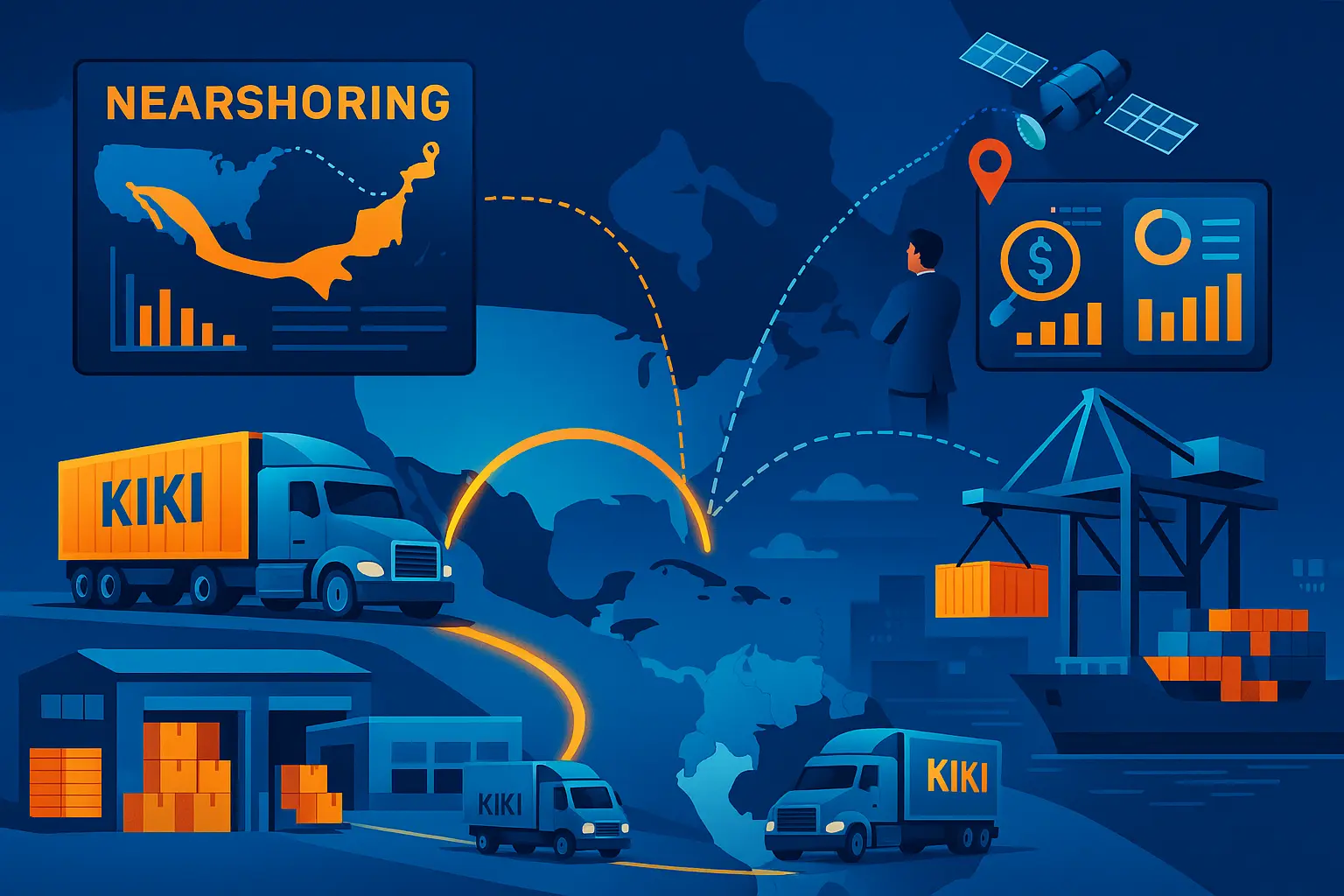
The global retail supply chain is being reshaped by a new wave of complexity—rising tariffs, evolving trade agreements, and shifting consumer behavior. Retailers are facing more than cost increases; they’re being forced to rethink how and where they operate.
As traditional sourcing hubs face higher duties and longer lead times, the industry is turning toward regionalized logistics, nearshoring, and smarter fulfillment strategies. In this environment, Latin America is emerging as a powerful logistics bridge—offering speed, cost-efficiency, and geographic proximity to North America.
Kiki Latam is helping businesses seize this opportunity with cross-border logistics, fulfillment, and last-mile solutions designed for agility and scale.
Why Tariffs Are Redefining Retail Supply Chains
Economic Pressure Meets Structural Change
New trade policies and geopolitical tensions—like those involving U.S.-China tariffs or updates to the USMCA—are not temporary disruptions. They are long-term structural forces changing how retailers operate.
To avoid punitive import duties and production delays, companies are reducing reliance on distant suppliers and shifting toward nearshoring hubs in Mexico and the broader LATAM region.
From Global to Regional Supply Chains
The traditional model of centralized manufacturing in Asia is being replaced by multi-regional strategies. Retailers are building distributed fulfillment networks, enabling faster delivery, lower customs friction, and better control over operations.
This shift is especially impactful in industries like electronics, fashion, and consumer goods, where lead time and shipping costs directly affect profitability.
The LATAM Advantage for Retail Logistics
Nearshoring to Mexico, Colombia, and Peru
LATAM countries are strategically positioned to serve both North and South American markets. With growing infrastructure and trade agreements in place, businesses can:
- Avoid high tariffs by producing closer to their final markets
- Reduce delivery timelines with regional fulfillment
- Navigate fewer regulatory hurdles through trade pacts like USMCA and CPTPP
Lower Operational Costs
Compared to U.S. or European warehousing, many LATAM regions offer cost-effective labor, warehousing, and last-mile services. When combined with efficient customs handling, this leads to higher margins and improved scalability.
Modern Logistics Requires Technology & Expertise
Real-Time Visibility and Coordination
Retailers managing multi-country supply chains need more than trucks—they need platforms that deliver visibility, control, and performance analytics. Real-time data enables faster decisions and accurate demand planning.
Key features include:
- Shipment tracking across borders
- Inventory sync with marketplaces and stores
- AI-powered insights to prevent delays
Changing tariff codes, duties, and cross-border policies require logistics partners who understand compliance. From automated clearance tools to document digitization, seamless customs management is critical to avoid delays or fines.
Kiki Latam: Powering Retail Logistics in the New Era
Kiki Latam is helping retailers embrace a regional supply chain model with integrated logistics services in Mexico, Colombia, Peru, and the United States. Our model is designed to simplify operations, reduce risk, and accelerate growth.
One Logistics Partner for LATAM
Instead of managing multiple contracts in each country, Kiki offers one agreement for full LATAM coverage—from import to last-mile.
Fulfillment + COD Services
We provide urban and rural delivery coverage, supporting cash-on-delivery (COD) in areas with limited digital adoption. This is essential in many LATAM markets where alternative payment methods remain popular.
Cross-Border Precision
Whether moving goods into Mexico or between markets, Kiki Latam provides the expertise and tools to handle customs, tariffs, and regulatory nuances—keeping your goods flowing smoothly.
Seamless Tech Integration
Our logistics platform connects with e-commerce systems, CRMs, and inventory tools to provide real-time inventory visibility, automated tracking, and performance reporting across your supply chain.
The global retail logistics landscape is changing fast—and retailers must evolve with it. Tariffs are no longer temporary obstacles; they’re shaping where and how companies source, store, and ship.
By shifting toward regionalized logistics models, businesses can reduce risk, speed up delivery, and better meet consumer expectations. But doing so requires the right logistics partner—one that understands tariffs, cross-border movement, and Latin American markets inside and out.
Kiki Latam is that partner.
From warehouse logistics to last-mile fulfillment and customs compliance, we offer the infrastructure and intelligence to help you scale across borders—without friction.
👉 Book a call with our team today and discover how we help global retailers thrive in the new tariff-driven supply chain era.
